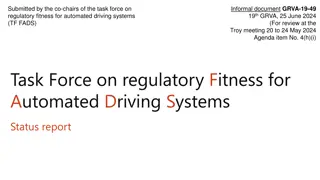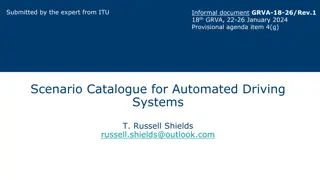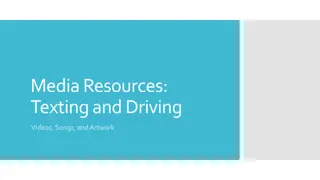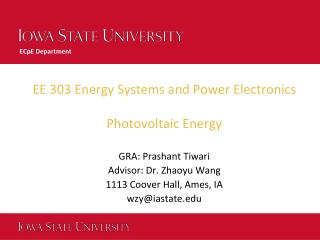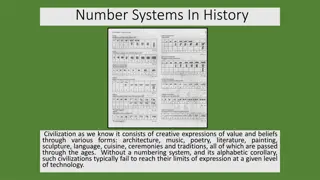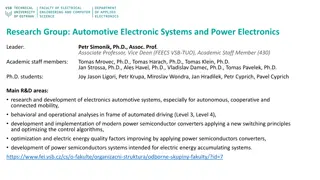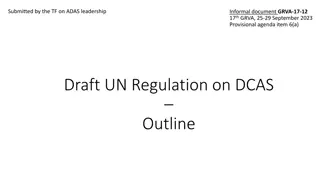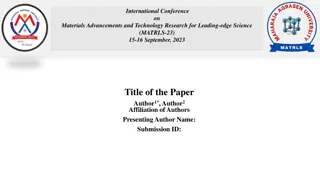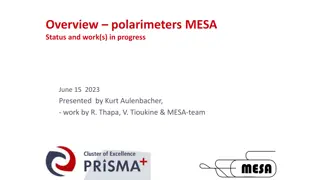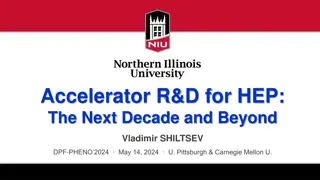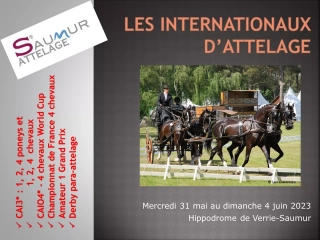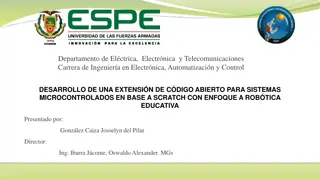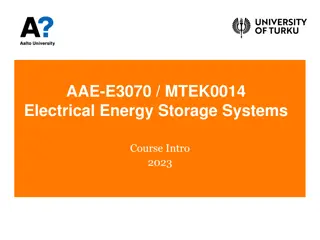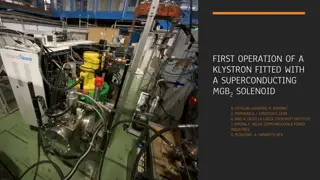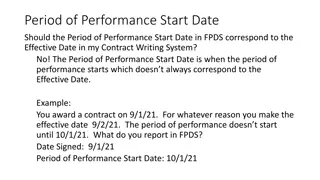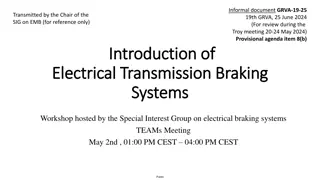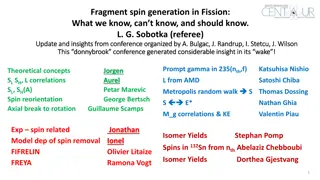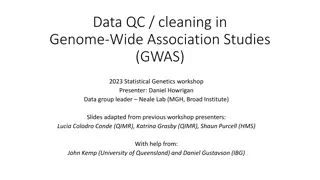Advancements in Level 2 Hands-Free Driving Systems
Explore the evolution of Level 2 hands-free driving systems worldwide, including market demand, introduction in different regions, system functionalities, and ongoing standardization efforts led by OICA/CLEPA. Key highlights include industry proposals, independent research projects, and significant milestones achieved by leading manufacturers such as GM and Ford.
- Hands-Free Driving
- Level 2 Automation
- Automotive Technology
- OICA/CLEPA
- Advanced Driver Assistance Systems
Download Presentation
Please find below an Image/Link to download the presentation.
The content on the website is provided AS IS for your information and personal use only. It may not be sold, licensed, or shared on other websites without obtaining consent from the author. Download presentation by click this link. If you encounter any issues during the download, it is possible that the publisher has removed the file from their server.
Presentation Transcript
PROTECTED DCAS Withholding of HORs March 2024 OICA CLEPA proposal for the 01 series of DCAS
PROTECTED L2-Hands-free Driving - Introduction and Market Demand System Introduction in different markets*: US: Canada: 2018 China: Japan: 2018 Great Britain: Germany: Spain: 2023 2023 2023 2018 2019 (*usage depends on local traffic regulations) Type of systems introduced: Highway lanekeeping: Highway lanekeeping and lanechange: from 2018 from 2022 Customers are widely using L2 Hands-free driving systems in major markets since 2018 Hands-free: Driver is free to chose to put hands either on or off the steering control, during hands-free operation Growing number of manufacturers are offering these systems and functionality is expanding ISO PAS 11585 (Conditional Hands Free Driving Systems) describes State of the Art published in Sept 2023 Under preparation: ISO PAS 11585-2 Test method to evaluate the performance of partial driving automation conditional hands-free driving systems Example GM: More than 160 million miles (257 million kilometers) have been driven accident-free with Super Cruise since market introduction* Example Ford: System has enabled already 175 million hands-free kilometers driven in US and Canada ** * https://news.gm.com/newsroom.detail.html/Pages/news/us/en/2024/feb/0215-supercruise.html(status Feb 2024) ** https://media.ford.com/content/fordmedia/feu/de/de/news/2023/08/28/entspannter-ankommen--ford-bringt-bluecruise-technologie-nach-de.html - (status August 2023)
PROTECTED Level 2 Hands-free - Background 2018: The informal group ACSF (16thsession) started to develop provisions for Automated Lane Keeping Systems, ALKS (ECE-R157) invited industry to start directly with GRVA the discussion on what needs to be changed /added to ECE-R79 to allow for Hands-Off/ Eyes On Lane Keeping Systems under a SAE Level 1-2 assumption. 2020: GRVA-07-23: OICA/CLEPA submitted a proposal to amend R79 ACSF B1 to allow Hands-Off in specific conditions. 2021: GRVA established a TF-ADAS to develop a new UN-R with the focus on systems of Level 2 (DCAS) 2021-Sept: TF-ADAS-07: OICA/CLEPA announced an independent research project on level 2 Hands-Off in order to ... answer the concerns and questions raised at GRVA and at TF-ADAS enable a fact-based discussion in the TF-ADAS 2023-Jan-19: GRVA-TF-ADAS -17: Presentation of the study results & recommendations 2023-July 26: TF ADAS Hands-free Workshop - OICA/CLEPA proposal for hands-free provisions (driver disengagement monitoring section) 2024 March: OICA/CLEPA proposal incorporated into the text of the 00 series of UN-R171 (DCAS)
PROTECTED Level 2 Hands-Free FKA/TUM study results (ADAS-17-05) Study performed by Aachen University (FKA) and Munich (TUM), with scientific advisory board members from Sweden (Chalmers), Japan (AIST) and US (Virginia Tech). Within investigated scope are state-of-the-art hands-free lanekeeping systems for highways. The study addressed the 5 main concerns that were raised in GRVA trough a deep analysis of existing literature, customer surveys, simulator and on-road evaluations, field operational tests, based on state of the art systems FKA/TUM addressed the main concerns related to hands-free operation
PROTECTED Level 2 Hands-Free FKA/TUM study results (ADAS-17-05) + Final Report - Numerous questions were received on the research and answers were provided by FKA/TUM Universities, either during the live Q&A of TF-ADAS-17 meeting or afterwards with document ADAS-19-06 - The final detailed report (417 pages) has been released end of April https://www.vda.de/de/aktuelles/publikationen/publication/level-2-hands-o---recommendations-and-guidance - Final report includes guidelines & recommendations for regulating L2 hands-free systems. These are based on discussions with project external scientists from the U.S., Japan, Sweden, and Germany and expert from the automotive industry. Questions to FKA/TUM study were collected and answered
PROTECTED Level 2 Hands-Free Development of the Proposal for DCAS Base Process Result FKA/TUM study Guidelines for hands-free L2 Review the design guidelines against the provisions established with the 00 series of DCAS Specific provisions to withhold hands-on warnings in Driver Monitoring section (= enable hands-free operation) 01 series: hands-free on highways** ISO PAS 11585* Adapt wording for regulation and derive provisions specifically needed for hands-free Target = formal document for GRVA Sept 24, to include hands-free provisions into the DCAS 01 series Manufacturers market & research experience *ISO PAS 11585: Road vehicles --Partial driving automation Technical characteristics of conditional hands-free driving systems ** Hands-free systems have in the meantime been released in off-Highway ODDs. Nevertheless, Industry is willing to limit the regulatory scope of such technology to highway driving for the 01 series of DCAS. Application to other road types should be targeted for following series of amendments of UN-R DCAS.
PROTECTED General concept for hands-free additions to DCAS 00 series: General safeguards have already been established in the 00 series:
PROTECTED General concept for hands-free additions to DCAS 00 series (outlined in ADAS 29-06): All provisions for driver State monitoring and warning strategies of 00 series remain valid However hands-on requests can be witheld for certain phases of operation Additionally following restrictions are proposed: Vehicle is on a highway Earlier eyes-on request warning in case DMS can no longer assess the driver s eye gaze (e.g. eye closure, turning around to rear seat passengers..) Narrowing the permitted gaze direction (road ahead) Provisions related to detected upcoming boundary condition (adjust lat/longi control, timely issuing of a HOR/DCA) Following provisions were proposed by industry before (ADAS 25-12) but now are already part of DCAS 00 series: Removed because already in DCAS 00 Relevant paragraphs in DCAS 00 series System able to assess both eye gaze and head posture 5.5.4.2.1.1. visually (e.g. gaze direction and/or head posture) disengaged. 5.5.4.2.5.1. The driver state monitoring system shall detect the driver s visual disengagement at a minimum based on the detection of the driver s eye gaze, or head posture if the driver s eye gaze cannot be determined. The system shall monitor if the driver is motorically (i.e., hand(s) on the steering control) and All emergency assistance systems in 5.1.5 are operational 5.5.3.2.2. (a) (b) (c) (d) (e) The system or its features shall only become active if all of the following conditions are met: The driver is in the driver seat and the driver s safety belt is fastened; The system is able to monitor the driver s potential disengagement with the driving task; No failure affecting the safe operation of the system has been detected; The system or feature has not detected to be outside of its system boundaries; Other safety systems according to paragraph 5.2. are operational. system informed the driver appropriately via the HMI about this modus of monitoring 5.5.4.1.2. 5.5.4.1.5. the state of the system, its capabilities and the driver s tasks and responsibilities. The system messages and signals shall be unambiguous, timely and shall not lead to confusion. The system s messages and signals shall be designed to actively encourage driver understanding of








